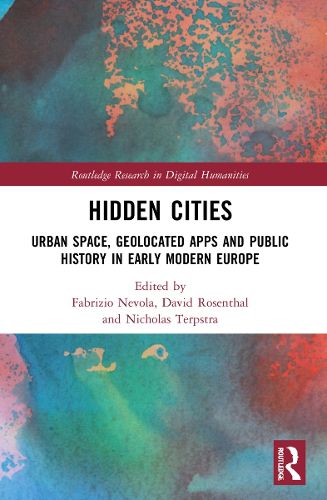Readings Newsletter
Become a Readings Member to make your shopping experience even easier.
Sign in or sign up for free!
You’re not far away from qualifying for FREE standard shipping within Australia
You’ve qualified for FREE standard shipping within Australia
The cart is loading…






This groundbreaking collection explores the convergence of the spatial and digital turns through a suite of smartphone apps (Hidden Cities) that present research-led itineraries in early modern cities as public history.
The Hidden Cities apps have expanded from an initial case example of Renaissance Florence to a further five historic European cities. This collection considers how the medium structures new methodologies for site-based historical research, while also providing a platform for public history experiences that go beyond typical heritage priorities. It also presents guidelines for user experience design that reconciles the interests of researchers and end users. A central section of the volume presents the underpinning original scholarship that shapes the locative app trails, illustrating how historical research can be translated into public-facing work. The final section examines how history, delivered in the format of geolocated apps, offers new opportunities for collaboration and innovation: from the creation of museums without walls, connecting objects in collections to their original settings, to informing decision-making in city tourism management.
Hidden Cities is a valuable resource for upper-level undergraduates, postgraduates, and scholars across a variety of disciplines including urban history, public history, museum studies, art and architecture, and digital humanities.
The Open Access version of this book, available at www.taylorfrancis.com, has been made available under a Creative Commons Attribution-Non Commercial-No Derivatives 4.0 license.
$9.00 standard shipping within Australia
FREE standard shipping within Australia for orders over $100.00
Express & International shipping calculated at checkout
Stock availability can be subject to change without notice. We recommend calling the shop or contacting our online team to check availability of low stock items. Please see our Shopping Online page for more details.
This groundbreaking collection explores the convergence of the spatial and digital turns through a suite of smartphone apps (Hidden Cities) that present research-led itineraries in early modern cities as public history.
The Hidden Cities apps have expanded from an initial case example of Renaissance Florence to a further five historic European cities. This collection considers how the medium structures new methodologies for site-based historical research, while also providing a platform for public history experiences that go beyond typical heritage priorities. It also presents guidelines for user experience design that reconciles the interests of researchers and end users. A central section of the volume presents the underpinning original scholarship that shapes the locative app trails, illustrating how historical research can be translated into public-facing work. The final section examines how history, delivered in the format of geolocated apps, offers new opportunities for collaboration and innovation: from the creation of museums without walls, connecting objects in collections to their original settings, to informing decision-making in city tourism management.
Hidden Cities is a valuable resource for upper-level undergraduates, postgraduates, and scholars across a variety of disciplines including urban history, public history, museum studies, art and architecture, and digital humanities.
The Open Access version of this book, available at www.taylorfrancis.com, has been made available under a Creative Commons Attribution-Non Commercial-No Derivatives 4.0 license.